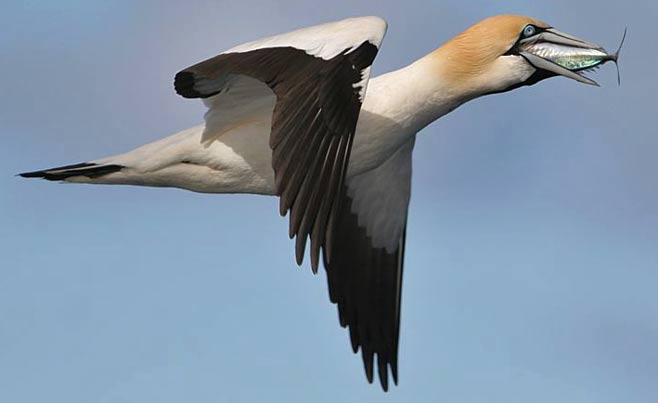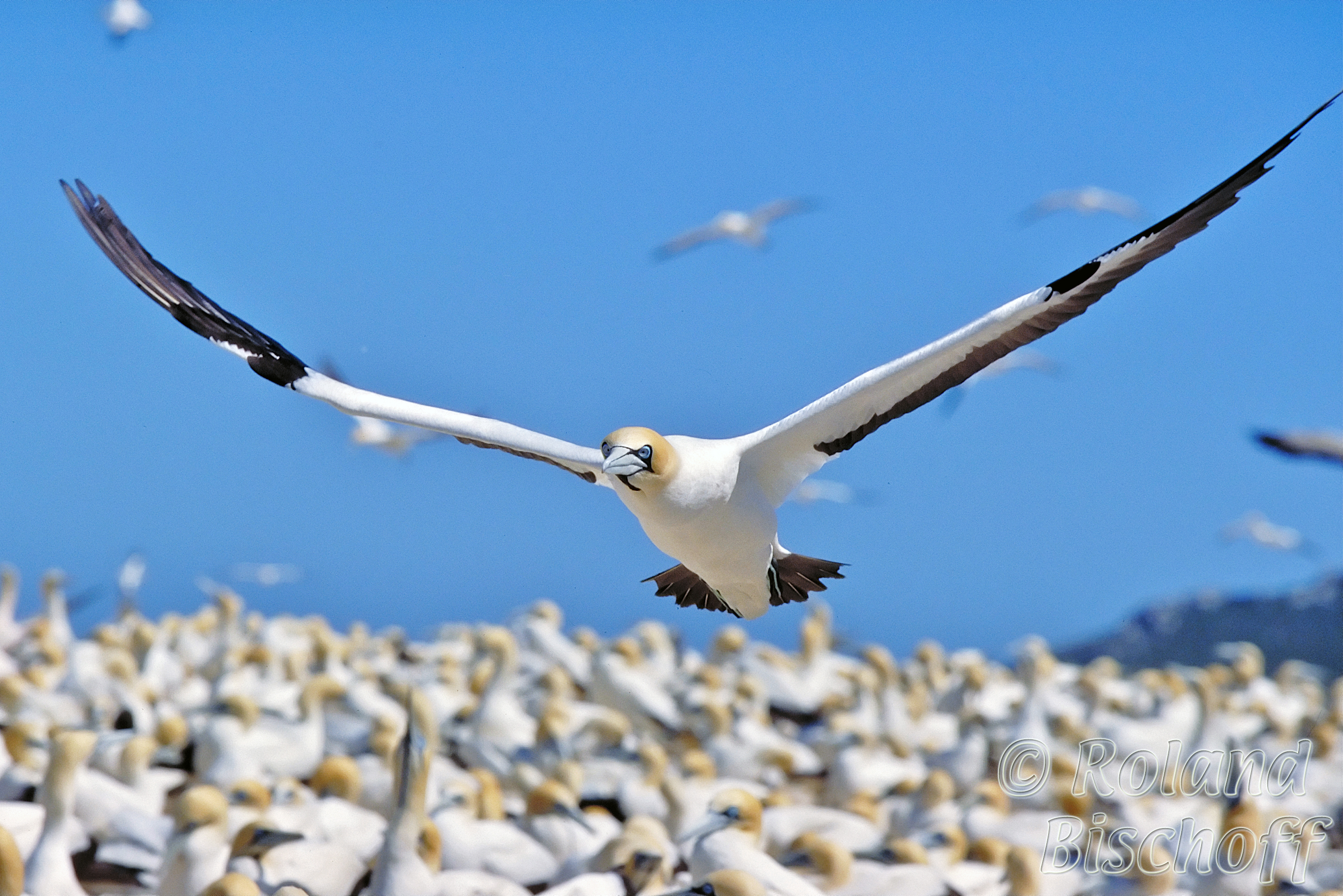
Morus capensis
TAXONOMY
Dysporus capensis, Lichtenstein, 1823, Cape of Good Hope.
Monotypic.
OTHER COMMON NAMES
English: African gannet; French: Fou du Cap; German: Kaptцlpel;
Spanish: Alcatraz del Cabo.
PHYSICAL CHARACTERISTICS
33.5–35.4 in (85–90 cm); 5.7 lb (2.6 kg). Slightly smaller than
northern gannet, wings show black wingtips and secondary
feathers; tail feathers also black. Black gular stripe much longer
than in the other gannets; head darker cream than in northern
gannet. Juveniles dark, gradually acquiring adult plumage.
DISTRIBUTION
Breeds coasts of South Africa and Namibia. Disperses north
along African coasts, to the Gulf of Guinea in the Atlantic and
to Mozambique, exceptionally to Kenya, in the Indian Ocean.
HABITAT
Strictly marine, mainly in waters of the continental shelf. Nests
on flat offshore islands.
BEHAVIOR
Much as in northern gannet although much less aggressive and
site competition less intense, despite nesting in very dense
colonies on flat ground. Similarly, sexual
BEHAVIOR
and pairbonding
displays are more moderate.
FEEDING ECOLOGY AND DIET
Feeds mostly on shoaling pelagic fish, particularly pilchard
(Sardinops), anchovy (Engraulis), saury (Scomberesox) and mackerel
(Scomber). Feeds by plunge-diving from 66 ft (20 m)
above water. Also forms large concentrations attending
trawlers.
REPRODUCTIVE BIOLOGY
Highly seasonal, September through April. Nests in very dense
colonies on flat ground, where nests consist of accumulation of
debris with central depression. Lays one egg, exceptionally
two. Incubation lasts 44 days. Young fledges at 97 days. Does
not start breeding until three to four years old.
CONSERVATION STATUS
Vulnerable. Only six breeding colonies known. Population has
undergone important reductions in the past and, in latter part
of twentieth century, has been further reduced through overexploitation
of fish stocks, particularly in Namibia. Oil pollution
and mortality caused by fishing gear are also known to take a
heavy toll.
SIGNIFICANCE TO HUMANS
In the past, heavily exploited for food and for fish-bait. The
cape gannet is one of the guano birds, its colonies being used
to extract the fertilizer until well into the twentieth century.
Other popular Animals
Photo Gallery of - Cape gannet




 Animalia Life
Animalia Life